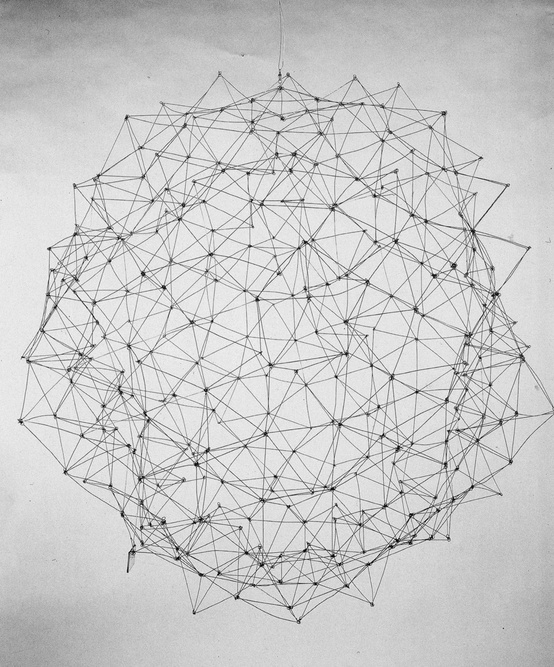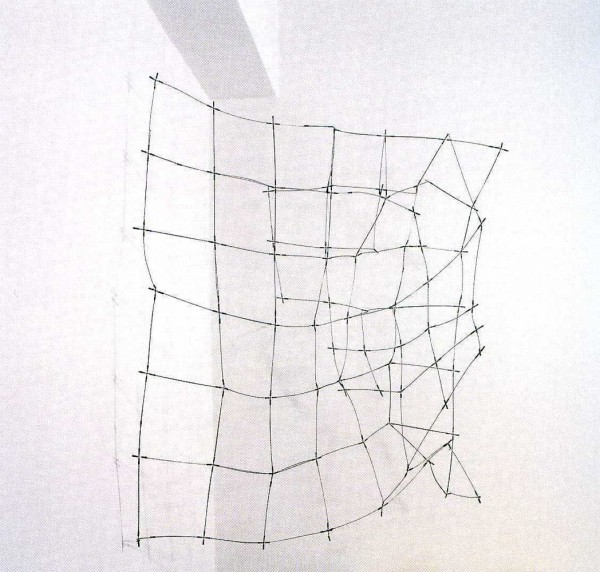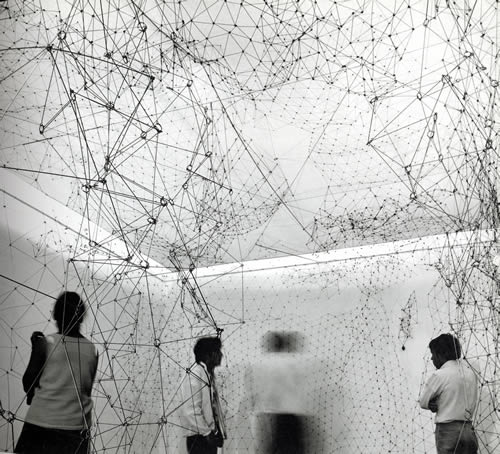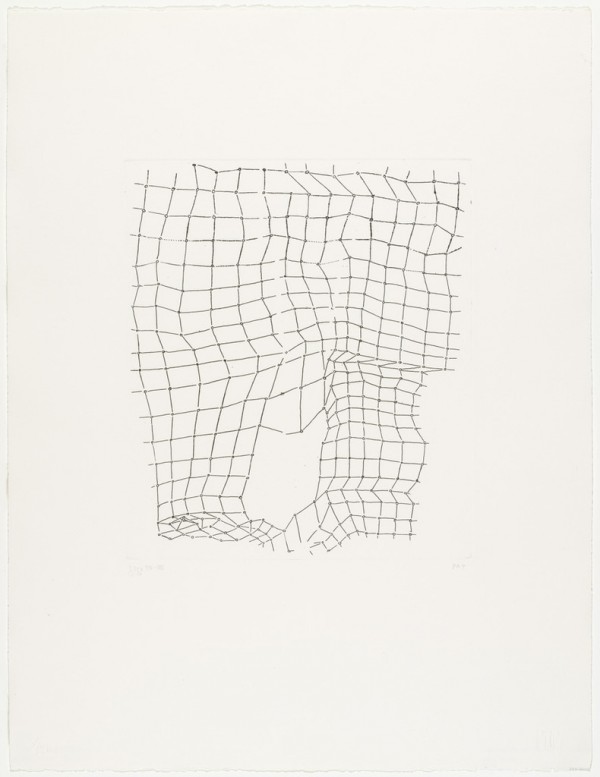Gertrud Goldschmidt
Sunday, 31 March 2013
Work from Reticulárea.
“Only the increasingly calligraphic quality of Gego’s (Gertrud Goldschmidt, 1912–1994) work and her interest in experimental engineering prepares us for the radical leap performed by her Reticulárea, which was first exhibited in June 1969 at the Museo de Bellas Artes de Caracas. The work, made of meshes and nets of metal connected and dispersed irregularly within the space of a room, was titled by Venezuelan art critic Roberto Guevara prior to its first exhibition. The Spanish word “reticula,” as in the English “reticule,” refers to a network of lines or a net; therefore, Reticulárea alludes to an area of nets. The Reticulárea, I will argue in this essay, rehearsed an artistic paradigm of production that in its refusal of the conventions of sculpture (mass, volume, scale) made line and space the means for a critique of architectural enclosure and sculptural monumentality. In its systematic undoing of the calculated geometries and gridlike structures favored by Venezuelan artists at the time, the work interrogated these idealized models of representation and their illusory reflection of a modernized urban space. Gego’s “weaving,” as she called the process of production that the design of the Reticulárea implied, was part and parcel of the constructive ethics that had fueled the country’s artistic imaginary in the fifties but which, by the late sixties, was domesticated by the government and the economic elite as a symbol of the country’s riches. Gego’s Reticulárea, in its attack on form and architectural demarcation, went against the grain of standard sculptural bodies (delimited, contained, and massive) to engage marginal spaces, such as the peripheries of rooms that she was at pains to activate in her installations, and to symbolically respond to the repressed borderline sites occupied by the shantytowns of Caracas…” – Mónica Amor



